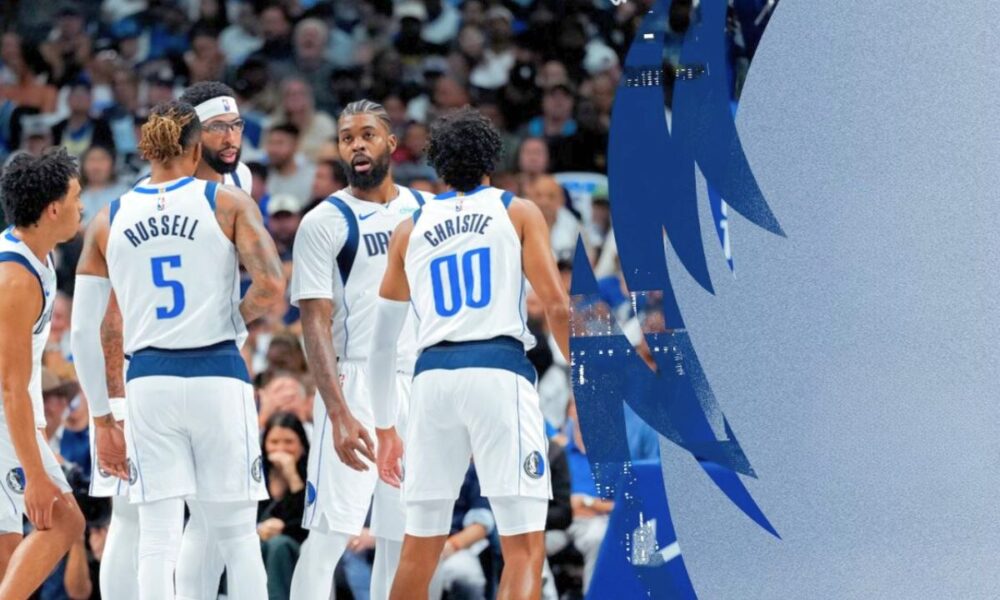The Dallas Mavericks fell to the San Antonio Spurs on Wednesday night as the NBA has officially returned to Texas for the 2025-26 regular season.
San Antonio managed to take down Dallas 125-92 in a matchup that was controlled by the Mavericks early, though a second-half surge by the Spurs helped carry the team to the win.
Although the season is just beginning, with Dallas still scheduled to play another 81 regular-season games, there are still meaningful takeaways from the first game of the season.
Here are three takeaways from the Mavericks’ opening night loss to the Spurs:
Stagnant Offense Raises Early Concerns
Dallas opened this matchup playing well offensively before the team began to stall in the second half, scoring just 41 points in the first game of the season.
The Mavericks struggled to consistently generate rim pressure throughout the second half, forcing many players into contested jump shots and difficult attempts near the basket.
This team will have to find a rhythm on the offensive end of the court to win meaningful games throughout the season, but that offense is unlikely to look like it did against San Antonio.
Dallas spent most of the game operating in an isolation-heavy offensive scheme, leading to these difficult shots.
While this scheme could work for many teams in the league, especially those with the best offensive talent in the world, it is not a recipe for sustainable success for Dallas this season.
Mavericks forward Anthony Davis said after the game that this team is “not gonna win games like that,” highlighting the need for more offensive execution.
“We got guys that are capable of doing it, but we don’t want to play like that. Especially when we have bad offense and guys aren’t making shots,” he explained, per Noah Weber.
“We gotta be able to move the basketball from side to side and get good looks. And we can live with the results there.”
Moving forward, the Mavericks must find a way to generate high-quality shot attempts while moving the ball, rather than relying on one-on-one opportunities to score.
Lack of Shooting Could Limit Offensive Ceiling
As a whole, the Mavericks shot the ball well from beyond the three-point line in this matchup, shooting 42.6% from that range despite the blowout loss.
However, many of these attempts came from wide-open shooters, with multiple players on the team seemingly shying away from more contested opportunities that would still have been a solid attempt.
The modern NBA relies heavily on the three-point shot, with teams across the league using it to grow and reduce leads throughout the year.
As a result, teams must be prepared to shoot themselves back into a game, a trend Dallas could struggle with at times during the season.
Although Dallas would seemingly prefer to have multiple big men on the court for most of the game, these lineups may not be realistic given the lack of shooting from the players on the floor.
Dallas will likely utilize these lineups with either Dereck Lively or Daniel Gafford once he returns from injury.
The issue is that neither Lively nor Gafford has demonstrated the ability to shoot during their NBA careers, meaning the other four players must be able to space the floor to create more room for the offense to operate.
Naturally, these players would struggle to play together, but the pairings with Davis could also struggle if the 10-time NBA All-Star is unable to shoot consistently this season.
Davis has struggled shooting the ball during extended portions of his career, as the power forward has not made over 30% of his attempts in a single year since the 2020-21 regular season.
The Mavericks will need Davis to find his shooting stroke at some point this season to fully take advantage of the size advantage that this team has.
Additionally, neither rookie Cooper Flagg nor forward P.J. Washington has proven to be among the league’s best shooters.
While both players have shown themselves to be capable shooters from behind the three-point line, neither has established themselves among the NBA’s elite, leading to concerns about the spacing on the offensive end of the floor.
If these players are unable to make jump shots this season, the team will have to use the two-big lineups less frequently to allow for more offensive cohesion.
Defensive Ceiling Should Not Be Judged After Just One Game
Entering the season, the Mavericks were widely expected to be one of the best defensive teams in the league due to the player personnel and experienced coaching staff.
Despite allowing San Antonio to score 125 points on opening night, this expectation should remain in place throughout this season.
Realistically, San Antonio could finish the season as one of the best teams in the league while being led by a player, Victor Wembanyama, who could easily rank among the best in the league by the end of the year.
Meanwhile, the Mavericks should not be discouraged by the defensive performance on opening night, as the matchup with San Antonio is a difficult game to open the year, and there is potential for even more growth over the coming months.
Although the big lineups could create issues on the offensive end, the Mavericks’ defensive flexibility this season is among the best in the NBA.
Dallas can choose to operate with a two-big lineup of Davis and either Lively or Gafford, which would give them one of the best combinations of size, wing defense, and post defense in the league.
Additionally, Dallas could opt for a smaller defensive lineup featuring Flagg at power forward and Washington at small forward, with one of the team’s big men anchoring the middle of the court.
As a whole, Dallas has incredible versatility on the defensive end, a skill that should help carry this team to wins and a potential berth in the NBA Playoffs.


